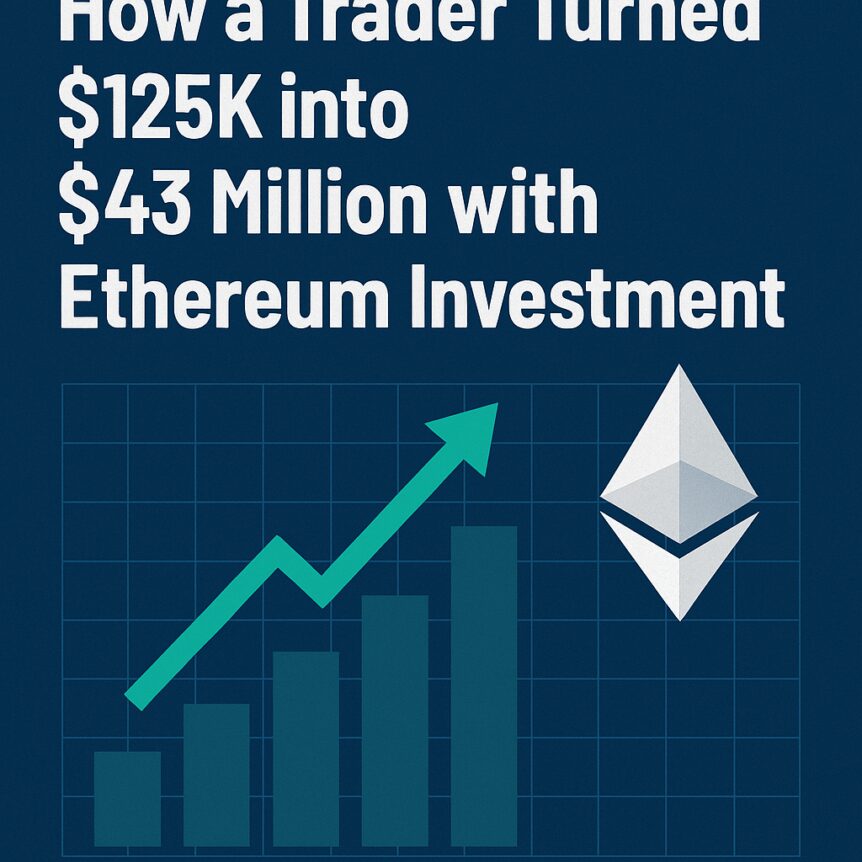
Cryptocurrency traders continue to push the boundaries of leverage and risk in the fast-evolving DeFi landscape. Recently, a trader managed to transform an initial $125,000 deposit into one of the largest Ether positions ever recorded, exceeding $300 million at its peak. This case exemplifies the incredible potential—and inherent dangers—of aggressive compounding and high leverage in the volatile crypto markets, raising important questions about risk management and the future of onchain trading strategies.
In a remarkable display of high-stakes crypto trading, a user operating on Hyperliquid escalated a position from an initial $125,000 deposit to a $300 million Ether long. Over four months, the trader repeatedly compounded gains into a single ever-expanding ETH position, eventually hitting a peak of over $43 million in equity. However, amidst mounting volatility and massive sell-offs by large ETH holders, the trader chose to unwind the position, locking in a profit of approximately $6.86 million, or 55 times the original investment.
This feat underscores how effective leverage and disciplined compounding can be in the crypto markets, especially when timing entry and exit points correctly. The trader’s ability to capitalize on bullish momentum while avoiding the pitfalls of market reversals exemplifies the power of aggressive strategies—but not without risk. The rapid price swings characteristic of Ethereum, combined with the use of 20-30x leverage, meant that a single unfavorable move could have wiped out months of gains in seconds.
Two key factors drove this success: relentless compounding and high leverage. As each profitable trade increased the position size, leverage amplified gains exponentially, enabling the trader to scale from modest beginnings to hundreds of millions. Timing was equally critical. As market signals showed signs of cooling, including whale sell-offs and ETF outflows totaling $59 million, the trader wisely exited before the downturn intensified.
Interestingly, while DeFi platforms typically limit leverage to around 1.4x to 1.9x—akin to traditional hedge funds—this trader operated at a vastly higher level. Hyperliquid’s infrastructure, powered by its own high-performance layer 1 blockchain, facilitates such high-volume, fast-paced trading, but it also introduces vulnerabilities, as seen during the Jelly token incident where stress tests revealed systemic risks.
The upside of such strategies is enormous, but the risks are equally substantial. Volatility can trigger rapid liquidations, especially with onchain leverage approaching 20-30x. In July 2025, a day of market turbulence saw over $264 million in liquidations, with Ether longs accounting for most losses—highlighting how swiftly those gains can evaporate. The trader’s decision to exit prevented total loss, but many other high-leverage traders, lacking such discipline, faced devastating setbacks, like a notable case where profits turned to losses exceeding $10 million.
Using leverage multiplies both rewards and risks, emphasizing the importance of well-crafted exit strategies, margin discipline, and awareness of broader market signals. As DeFi infrastructure matures, traders must adopt robust risk controls or risk their capital’s longevity.
This story vividly illustrates both the opportunity and peril inherent in high-leverage, onchain trading. Platforms like Hyperliquid leverage advanced blockchain tech, allowing for rapid execution of multi-million-dollar positions, but their fragility under stress remains an open question. Recent events, such as the Jelly token intervention, reveal how quickly risks can materialize in complex DeFi environments.
Institutional capital increasingly influences crypto markets, with ETH experiencing significant inflows from ETFs and corporate holdings, which in turn pressures retail traders and whales to respond swiftly to external signals. As strategies historically confined to centralized exchanges shift onchain, the need for improved safeguards and governance structures becomes more urgent. The evolution of DeFi trading underscores a future where infrastructure stability, transparency, and risk management are vital for sustained growth and user confidence.
This article was originally published as How a Trader Turned $125K into $43 Million with Ethereum Investment on Crypto Breaking News – your trusted source for crypto news, Bitcoin news, and blockchain updates.
Also read: Stellar Holders Back Remittix As Presale Sets New Records As XLM Price Falls To $0.37